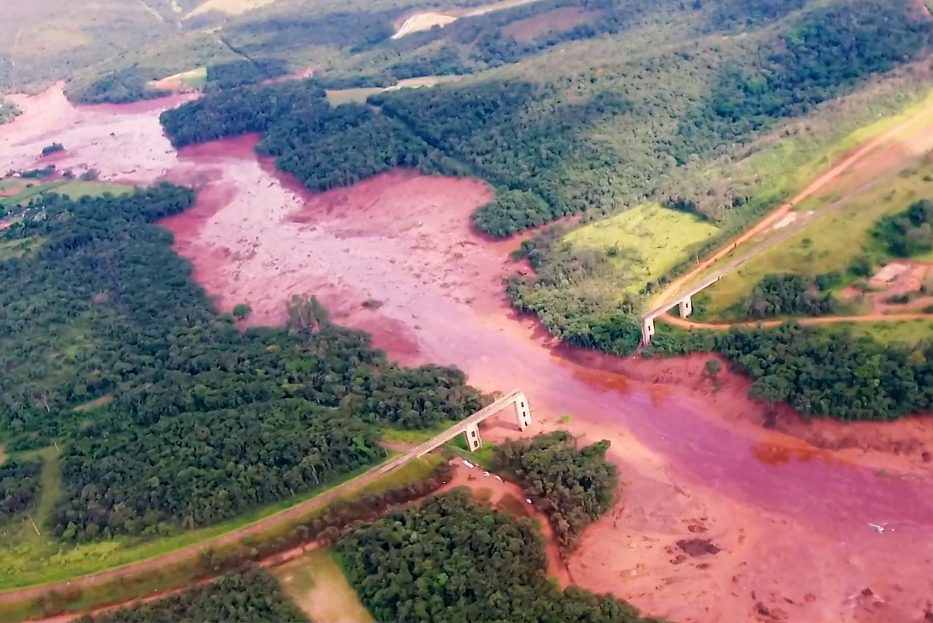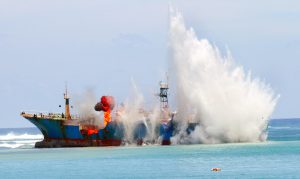Maria Barbosa has been waking up to the sound of helicopters for a week. It’s not the noise that bothers her, but the painful inkling of hope she feels each time she hears one.
Barbosa thinks one of them might bring her son Ricardo Oliveira, a machine operator who disappeared on the January 24 after a dam burst in the mining compound where he worked in the southern Brazilian city of Brumadinho. It released a deadly wave of mud that killed at least 102 people. Another 238 are missing, presumed dead by authorities.
“The ones who disappeared there and the ones who are left, we are all dead,” said Barbosa as she watched the helicopters land on a soccer field near her home in the Córrego do Feijão neighbourhood. “This town is now dead. There won’t be any jobs left, there will be nothing here.”
Like many cities in the state of Minas Gerais, Brumadinho depends on mining. The industry provides the best-paid jobs and tax revenues that fund public services. But it’s also a time bomb. The tragedy that devastated Brumadinho happened only three years after another dam broke in Mariana, also in Minas Gerais, killing 19 people and poisoning rivers and native vegetation in three different states.
Both mining compounds are owned by Brazilian mining giant Vale S.A., although the Mariana dam was part-owned by BHP Billiton, an Anglo-Australian company.
Cutting costs
Towns like Brumadinho and Mariana are hostage to fluctuating global iron ore prices. When they are down, companies try to cut costs as much as they can and dam maintenance can suffer, according to Tádzio Coelho, a professor at the Federal University of Maranhão who studies the social and environmental impacts of mining.
According to Coelho, fluctuations have been directly connected to Chinese growth. Between 2002 and 2011, the world experienced an iron-ore boom, as China’s grew at a two-digit rate. Demand for resources to build houses and factories rose. Chinese growth made mining companies like Vale extremely profitable.
But around 2012, Chinese growth begun to slow significantly and iron ore prices crashed, hurting Brazil’s economy. Whilst in 2011 a tonne of ore was sold at US$126, between 2017 and 2018 the same product cost US$50. This meant mining companies had to make difficult choices to satisfy their shareholders.
“One strategy to reduce costs is cutting spending on environmental protection, as well as waste dam maintenance,” said Coelho. “They reduce the monitoring of these dams, even though this increases the risk they will break.”

Romeu Zema, the newly-elected governor of Minas Gerais, also promised to make the process of getting permits faster for mining companies.
But amid growing public anger over Brumadinho, the government may be forced to reconsider.
As a result of Brazil’s protracted recession, the Brazilian government – just like the mining companies – cut costs. Coelho says the National Mining Agency, which is responsible for monitoring dams, only has around 160 employees to monitor hundreds of dams all over Brazil. The result is that a great number are not being monitored at all.
According the National Water Agency, there are 790 mining waste dams in Brazil, and 204 of them have high potential for causing damage.
The process of obtaining permits in Brazil is deeply flawed. Companies pay for their own audit reports, creating an obvious conflict of interest. When something goes wrong, there is often impunity. So far, no one has been arrested in the Mariana case and no fines paid.
“Now they want to make Vale a villain, but it’s not just that,” said Coelho.
“The monitoring is problematic, the licensing is problematic, the punishment when something goes wrong is problematic. This makes us believe that unfortunately the chances this will happen again are great.”
Manuela Andreoni is the Latin America editor for Diálogo Chino, where this article was first published.
Read: Video: the human costs of the Baglihar dam
Read: Many questions as Bhutan plans big dam with reservoir
![<p>The Brumadinho dam collapse comes just three years after a similar catastrophe in Mariana [image via: WikiCommons]</p>](https://dialogue.earth/content/uploads/2019/02/Brumadinho-and-Mariana-1440x720-300x150.jpg)






![A view of receding flood waters in Srinagar city during the September 2014 flooding. [image: Athar Parvaiz]](https://dialogue.earth/content/uploads/2017/11/A-view-of-receding-flood-waters-in-Srinagar-city-during-the-September-2014-flooding-Credit-Athar-Parvaiz-e1509633052651-300x225.jpg)

